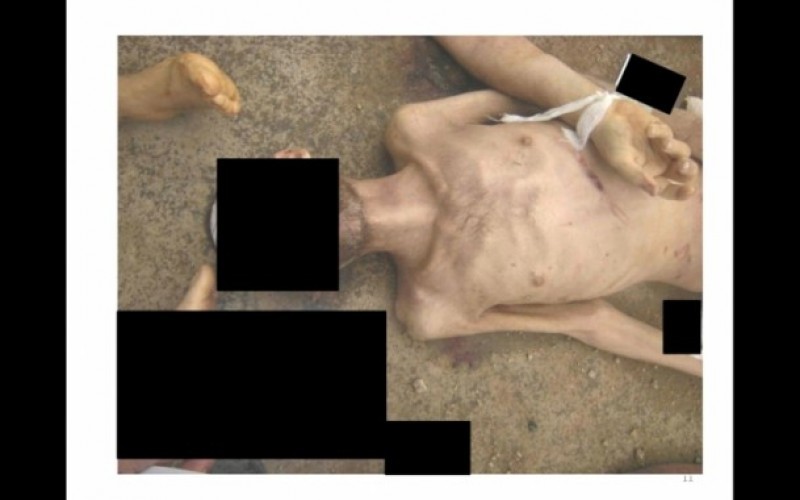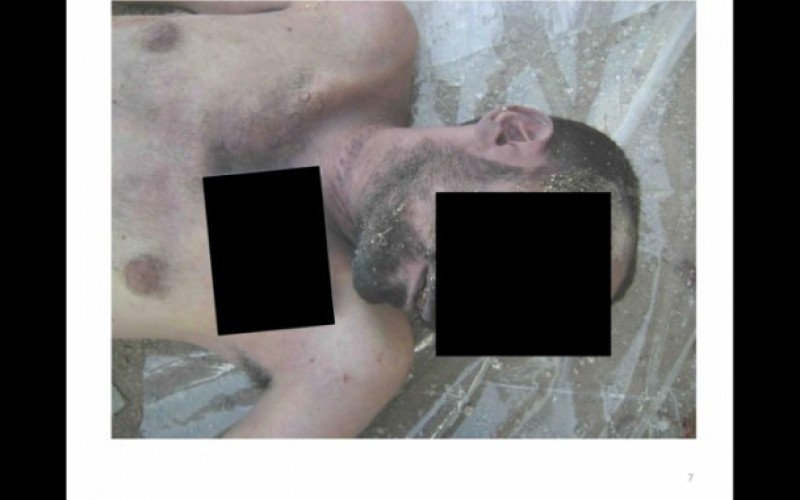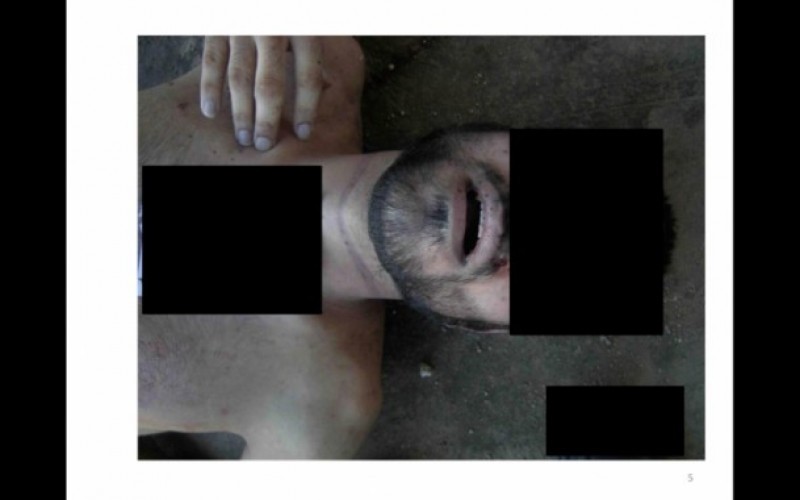
Anadolu Agency has reached the report and photographs documenting war crimes committed by Assad regime in Syria.
Someone who has been working as a military police in Syrian army for 13 years was assigned with the duty to take photographs of dead people brought to military hospitals of the regime throughout the civil war in the country.
All of the people brought to the hospital were Syrian opponents who were tortured, strangled and starved to death when they were in custody. The military police took face and body photographs of these dead people who were brought to the hospital and numbered them and submitted them to his seniors every day.
These photographs of the dead bodies showing also the cryptic handwritten notes are regarded as the records of the enforcements of the death orders given systematically in the Syrian army.
The military police who had taken 55 thousands of photographs in two years with his friends contacted with the opponents secretly as he couldn't bear up against the systematic torture and killing policy. He recorded the photographs regularly to a flash disk throughout two years and he gave it to the Syrian opponents secretly.
As a result of the attempts of the opponents, a special commission was established in England comprised of international jurists who are experts in war crimes and crimes against humanity as well as experts in forensic science and forensic photography. In the commission there are prosecutors and lawyers assigned in the private courts established by the United Nations for the ex-president of Yugoslavia, Slobodan Milosevic who committed war crimes before and for Sierra Leone.
That whether the photographs and other images are real or fake and if they are blocked out was examined in a laboratory in England. All the materials examined were proven to be real photographs without any blocking out.
The commission examined 26 thousands of 55 thousands photographs. After the examination it was determined that people in the photographs were tortured systematically, that they were tortured when their hands and feet were tied and that they were strangled with materials as ropes, wires and even timing belts used in the cars. Another important conspicuous detection was that they used hunger as a type of torture. The commission guessed that the number of people who were killed by these ways, and whose 55 thousands of photographs were taken are about 11 thousands.
The commission members listening to the officer who took phonographs after he fled out of Syria as an eyewitness, appealed to other eyewitness' for their testimonies. The commission decided that all these findings are “clear evidences” that are acceptable in the war crimes court that is to be established.
Deciding that these are “strong evidences” for the suits that is to be brought against Assad's regime with the claims of “crime against humanity” and “war crimes”, the commission put its work into a report form. The report was signed by all the commission members.
Source: AA














